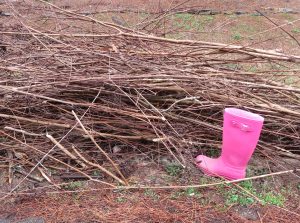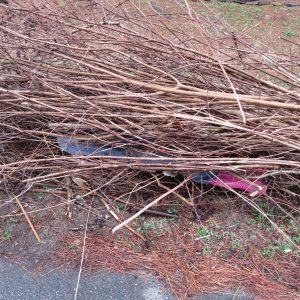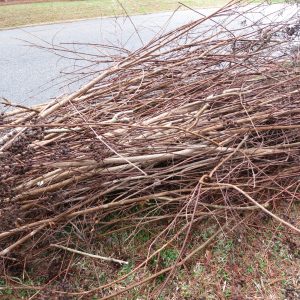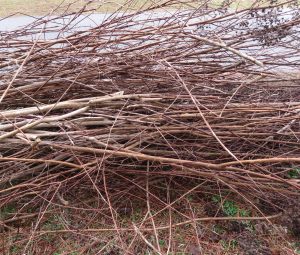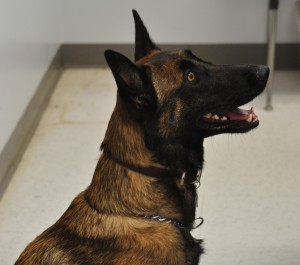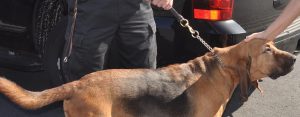KN, p. 212 “Sheila Sees a Body in the Brush Pile”
Sheila here. This morning, I finished trimming one of the backyard crepe myrtles and hauled the branches out to the curb. I had to use a reciprocating saw to cut through part of the tree, but was able to use a handheld clipper for some of the smaller sections. I felt that clipper fall out of my pocket while I stacked the debris at the curb. It wasn’t going anywhere, so I finished dragging and piling the branches before I looked for the wayward tool.
Guess what? It took me a few minutes to find it, even though I basically knew where it had fallen and had a limited area in which to search.
We frequently watch TV shows and movies telling the tales of people that go missing in the night, people who might have wandered off from a campsite, people or children who might have been separated from a touring group, but who then get lost. Nothing nefarious suspected, but the person hasn’t turned up in a reasonable amount of time. Maybe they tripped and fell, hit their head, and became unconscious.
There are search and rescue groups organized for just this purpose, and most of the members are well-trained volunteers. See Fiona Quinn’s article here.
We, the public, think a body in the woods would be easy to find, unless buried in the ground, or hidden behind a rock, so why do we need all the people and the dogs walking close to each other in a well-defined, mapped out grid?
How hard could it be?
Charlie’s crime oriented brain has rubbed off on me, so this is what I did. I stuffed an old pair of jeans, stuck one of my bright pink wellies at the end of a leg, piled the branches on top of ‘the body part’ and took photos. My apologies to the new neighbors who don’t know what Charlie and I do in our spare time.
Can’t possibly miss that bright pink wellie I showed you at the beginning?
This is what you’re searching for:
The ‘leg’ is fully visible from this angle, right?
All I did was walk to the other side of the brush pile. A glimpse of the jeans can be seen, but not the bright pink wellie.
I did not remove ‘the body part’ before taking this picture, I promise you. I knew right where the jeans and wellie were and could not see them. Standing right over the ‘crime scene,’ and just because I was at a different angle, and a few steps in a different direction, the area looked quite innocent. Just another gardening pile, in the middle of a nice neighborhood, waiting for pickup from the city refuse truck.
This is why we need Search and Rescue teams walking close together, looking at every blade of grass in front of their feet. In this case, if the ‘body’ had been in the woods, the dogs would probably be called out as well.
Many thanks to all the hardworking volunteers who train vigorously in tough terrain to get certified and are ready to help whenever called upon.
Disclaimer: I did not use a real body part. The jeans were stuffed with t-shirts. Seriously. 😉
KN, p. 212 “Sheila Sees a Body in the Brush Pile” Read More »

